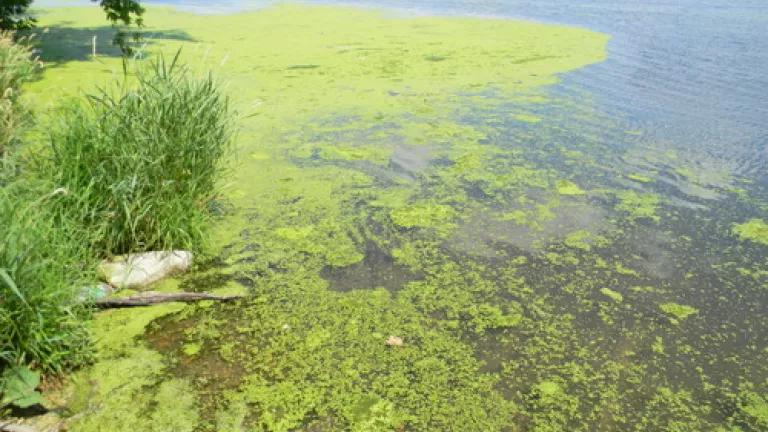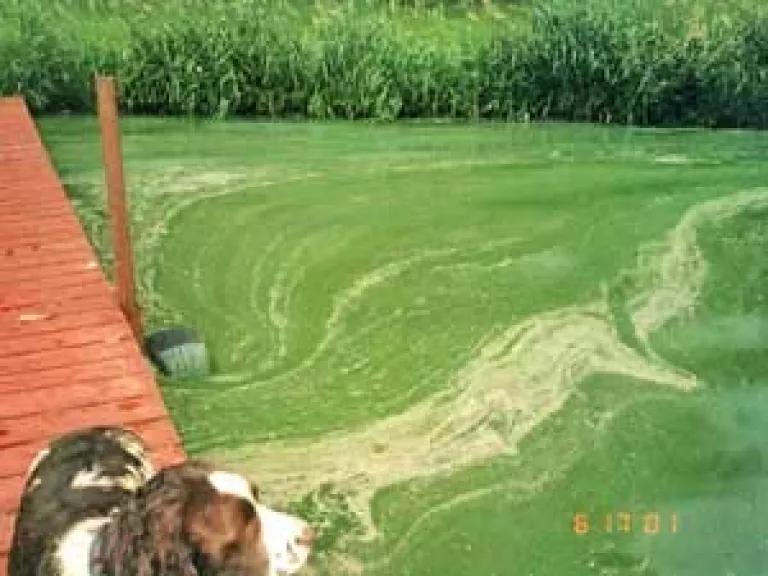
As those of you who follow the green slime crisis in our nation’s waters may know, in the summer of 2008, NRDC and others in the Mississippi River basin states petitioned USEPA to issue regulations to control the pollution that is fueling the rampant growth of algae in our nation’s waters, and creating the giant Dead Zone in the Gulf of Mexico at the mouth of the Mississippi. Since the states had refused to take a critical step toward getting a handle on the problem – implementing standards for algae-fueling pollutants nitrogen and phosphorus based on hard numbers – we asked EPA to implement those standards itself, using its Clean Water Act legal authority. The Agency declined, but assured us that it could better fix the problem by playing nice and encouraging the states to voluntarily do the right thing.
This week, six years and several lawsuits later, we sent extensive information to EPA to let them know how that’s going. And the short answer is – really not well. It is clear once again that the Agency’s “let’s all just collaborate” approach that has never worked to reduce algae pollution is still not working.
At the time we filed our petition, EPA had been openly acknowledging the severity of the algae problem for more than a decade, and setting tough-sounding “this time we really mean it, don’t make us come over there” deadlines for states to develop pollution standards – which the states promptly blew through without consequence. Despite this, EPA kept insisting that states would surely come round and put the standards in place if the Agency just helped everyone work and play well together through committees, strategies, goals, and other cooperative voluntary what-not short of actual regulation.
Three years later, with our petition still pending and these voluntary Kumbaya strategies having entirely failed to prompt state action, EPA took the bull by the horns and boldly …issued another memo calling for more voluntary cooperative strategies. This March, 2011 memo – excitingly titled “Working in Partnership with States to Address Phosphorus and Nitrogen Pollution through Use of Framework for State Nutrient Reductions” – was mostly a mishmash of the sorts of exhortations to states to develop an algae control strategy that had been failing miserably for years. It did, however, contain one item that was almost substantive: a statement that a reasonable time frame for developing numeric pollution standards for at least one set of waterbodies in the state would be 3-5 years.
So fast forward another 3 years, to now – when it should come as a surprise to no one, least of all EPA, that the 3-5 year timeframe is not being met, and the failed non-regulatory strategies repackaged in the 2011 “Framework” memo are continuing to fail. For those of you old enough to remember, Franco remains dead. As, unfortunately, does the Gulf Dead Zone.

EPA, jolted into action by its resounding loss last fall in our lawsuit challenging the Agency’s non-answer to our petition, recently reached out to the states to find out what kind of progress they were making, clearly hoping for some positive news. Although the states responded with happy talk about how many wonderful collaborative and cooperative and strategic things were breaking out everywhere, it’s pretty clear from the actual substance of their responses that pretty much nothing is being done, and the only thing breaking out everywhere is more algae blooms. Indeed, a number of states are actually making backward progress, having abandoned even their previous half-hearted efforts to come up with standards. For example, Iowa, Missouri, and Kentucky, all top contributors of nitrogen and phosphorus to the Gulf Dead Zone, have backed off from previous efforts to establish standards. Louisiana, whose coastal waters include the Dead Zone, has tried to remove that area from its annual list of pollution-impaired waters, and has also been removing limits on algae-fueling pollution from its state-issued permits. Illinois, whose Chicago region is the largest single contributor to the Gulf Dead Zone, has not only failed to develop a schedule for setting standards for its streams, but has reversed course and is no longer identifying phosphorus as a cause of pollution in its submissions to EPA.
And all the while, as EPA continues to lead its chorus of Kumbaya, the Gulf Dead Zone has not improved, and our nation’s green slime problem elsewhere is clearly not going anywhere either. As we reminded EPA in our letter this week, the Dead Zone has continued to average more than 5,000 square miles in recent years, a far cry from the Agency’s goal of 1,900 square miles that it reaffirmed the year we submitted our petition. Meanwhile, in the summer of 2013, the Indiana State Department of Health reported high levels of potentially toxic blue-green algae at many of Indiana’s reservoirs and lakes, and advised swimmers and boaters to avoid all contact with this visible algae and to contact a doctor if they experienced rashes, skin, eye irritation, nausea, stomach aches, and tingling in fingers and toes. The number of Kentucky stream miles listed as impaired for algae pollution has risen markedly. And the Des Moines Water Works announced “historic nitrate levels” in 2013, and was forced to take emergency actions to protect residents from “dangerous levels” of that pollutant.
If it is true, as Albert Einstein never actually said, that the definition of insanity is doing the same thing again and again and expecting a different result, then EPA’s approach pretty squarely fits it. The Louisiana court that gave us a win last fall and ordered EPA to give us a straight answer to our 2008 petition was also giving EPA another opportunity to turn things around, put the kibosh on strategies that aren’t working, and try something new. The Agency’s appeal of that ruling is a pretty clear indication that it doesn’t plan to take that opportunity. We just have to keep hoping that someday EPA will finally abandon its group hug approach to a problem that cries out for tough action.
Top photo by Cynthia Skrukrud, Ph.D
Bottom photo by Amy Goerwitz

